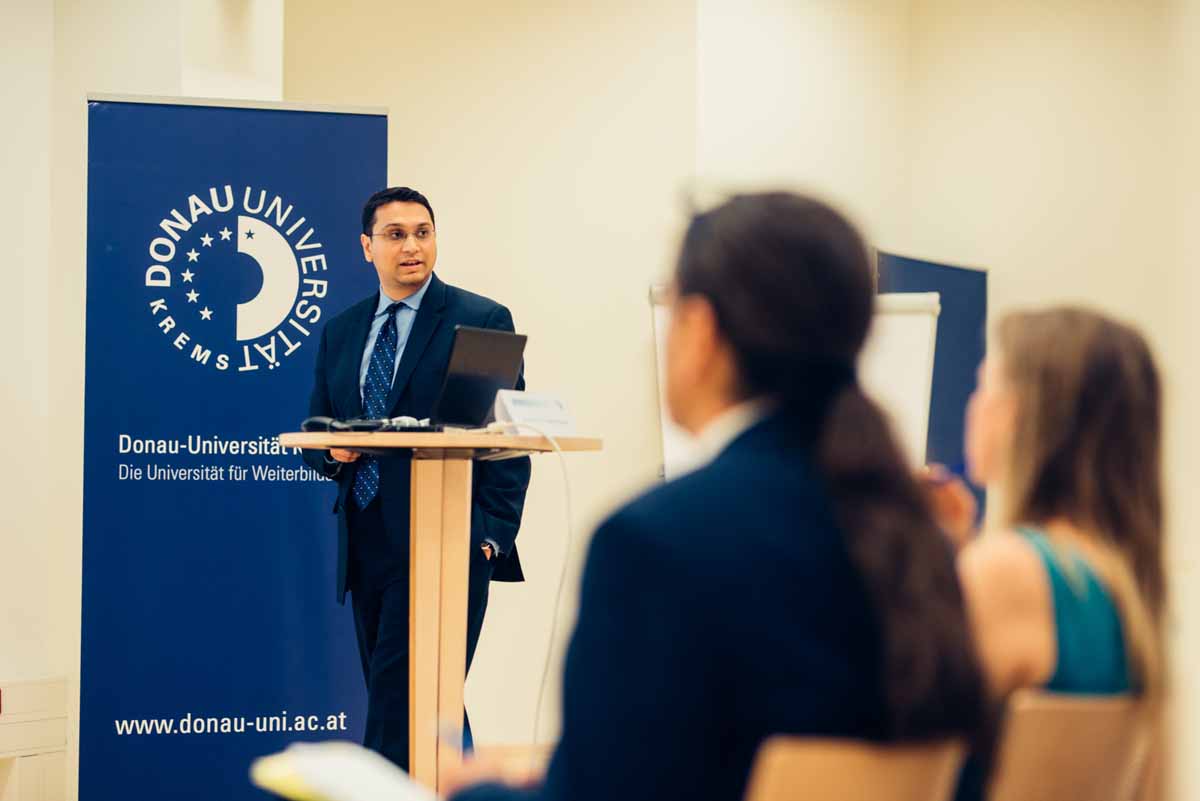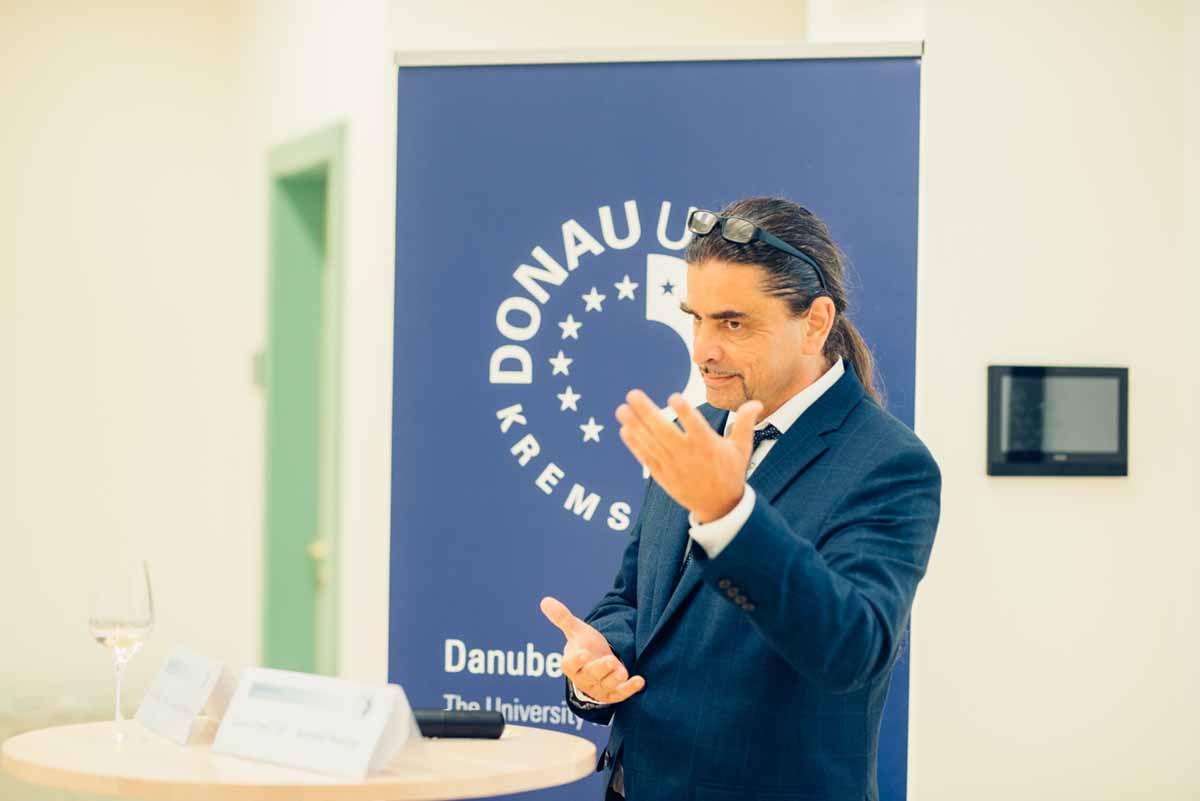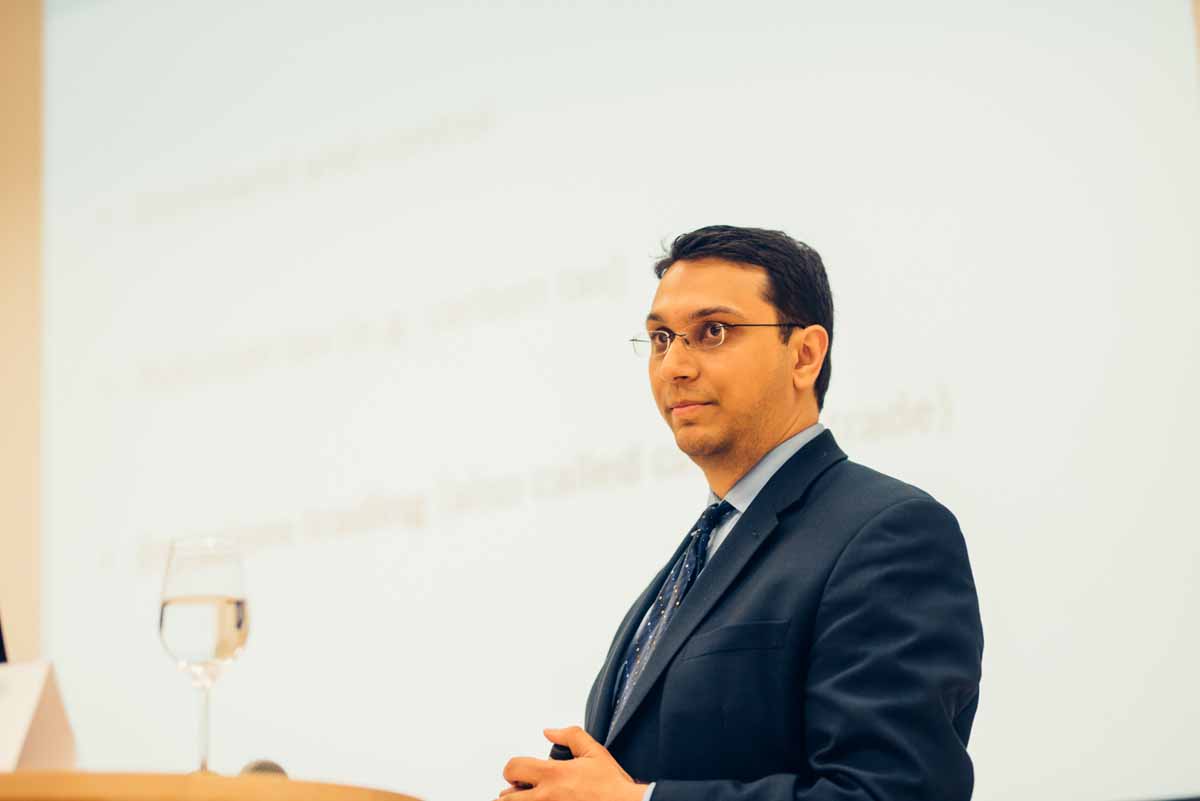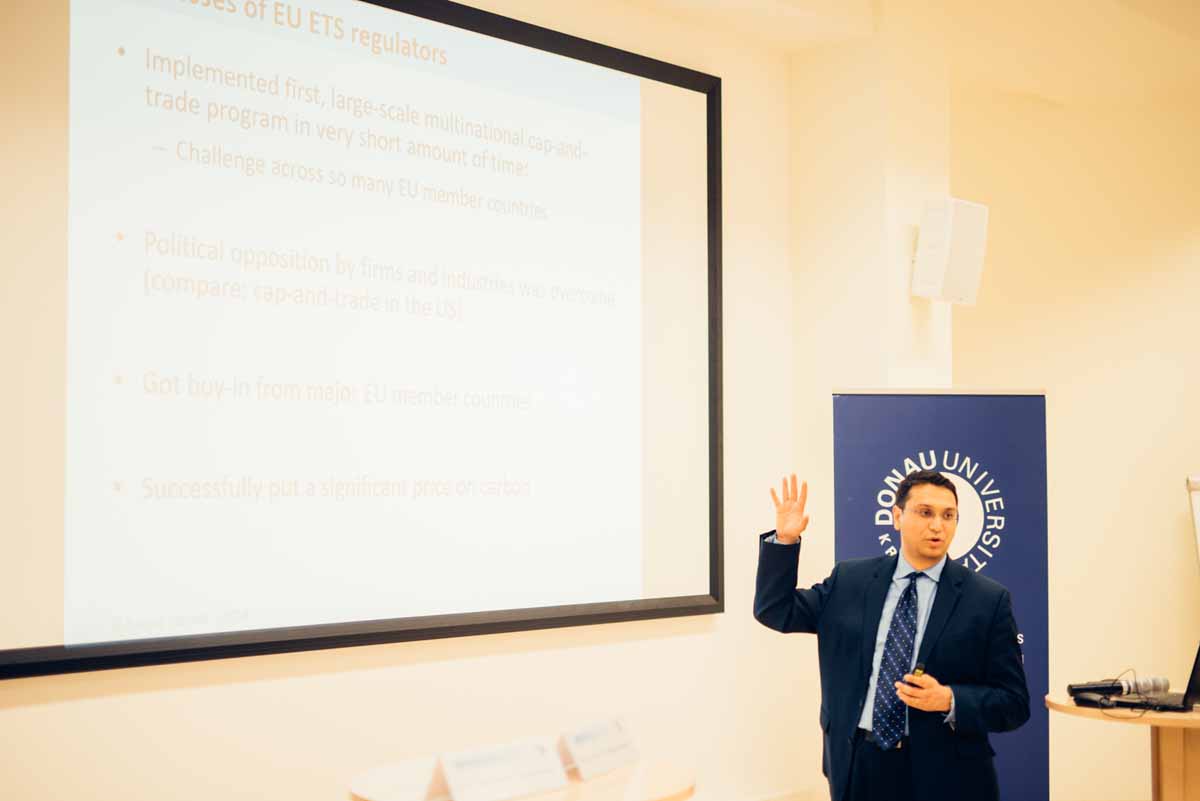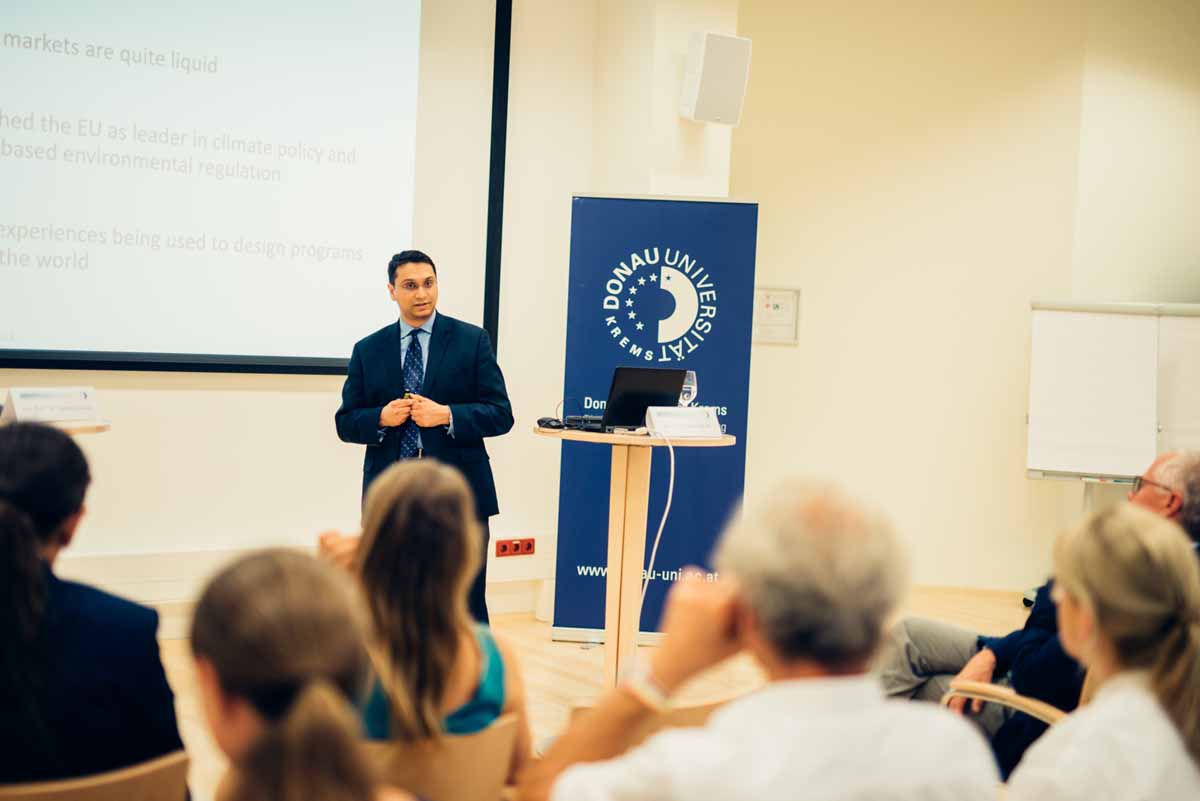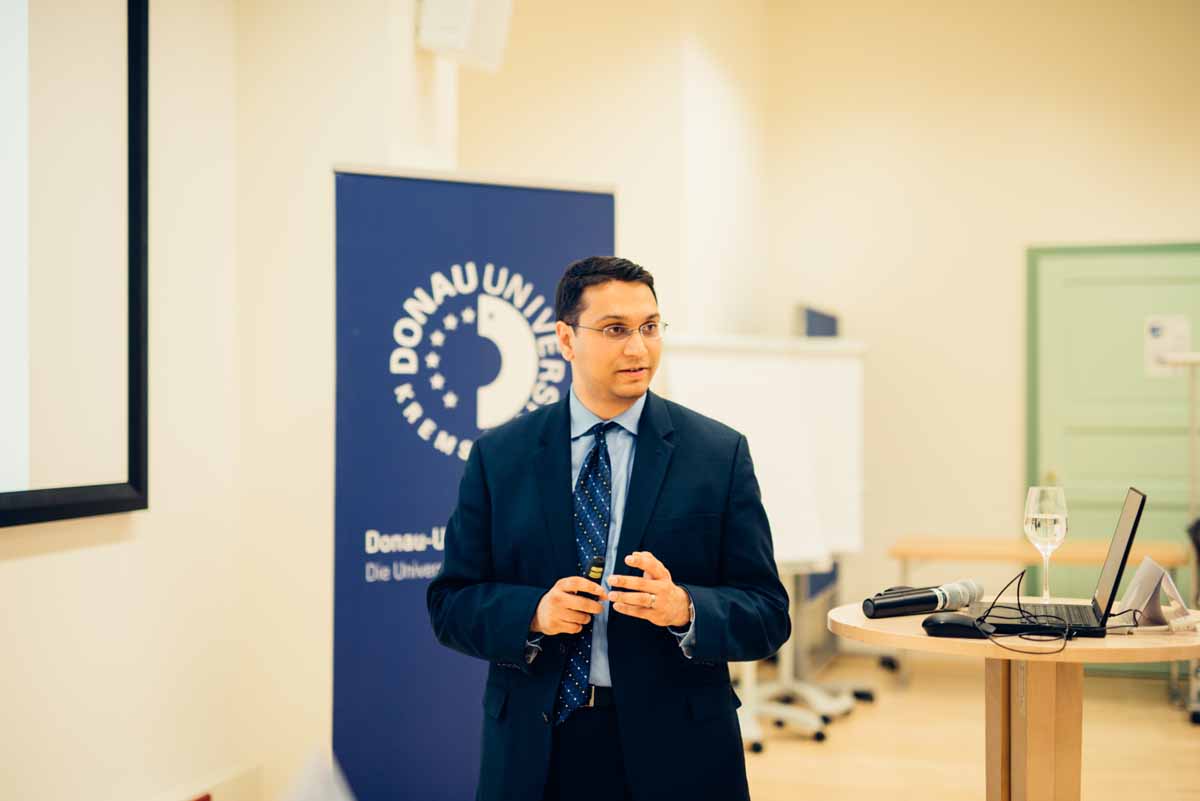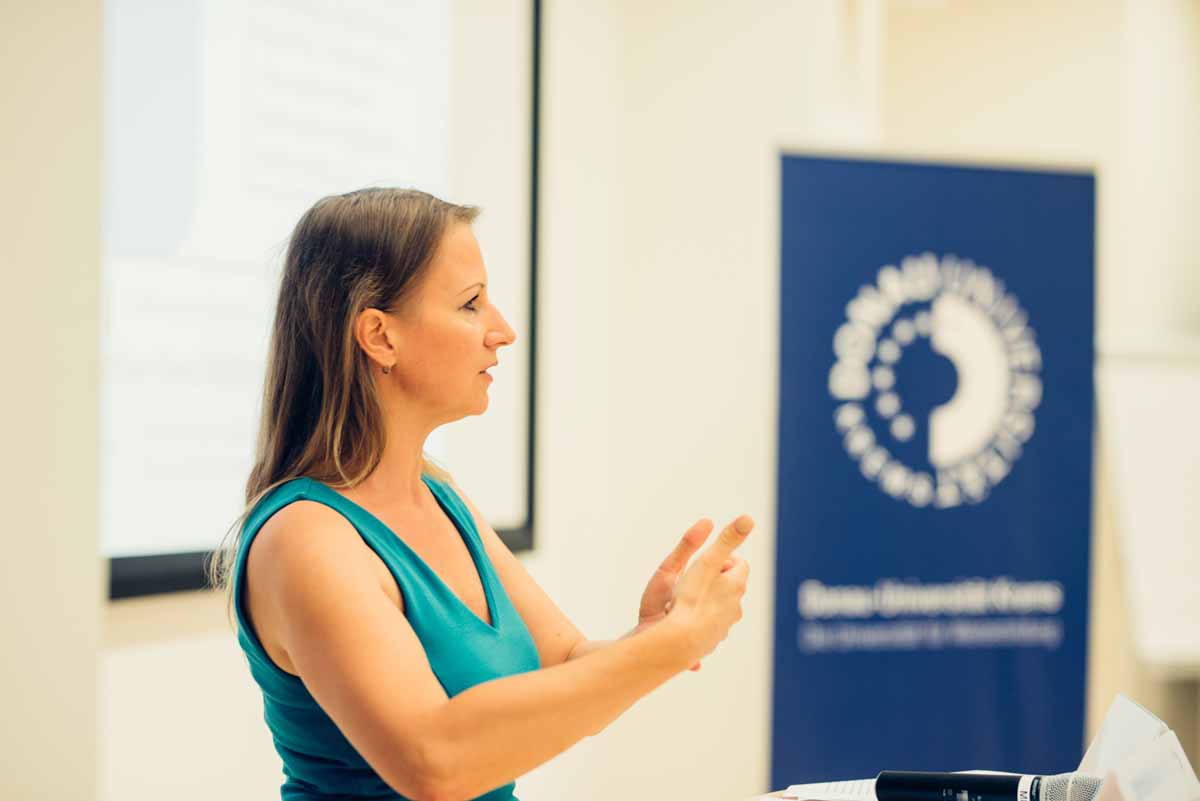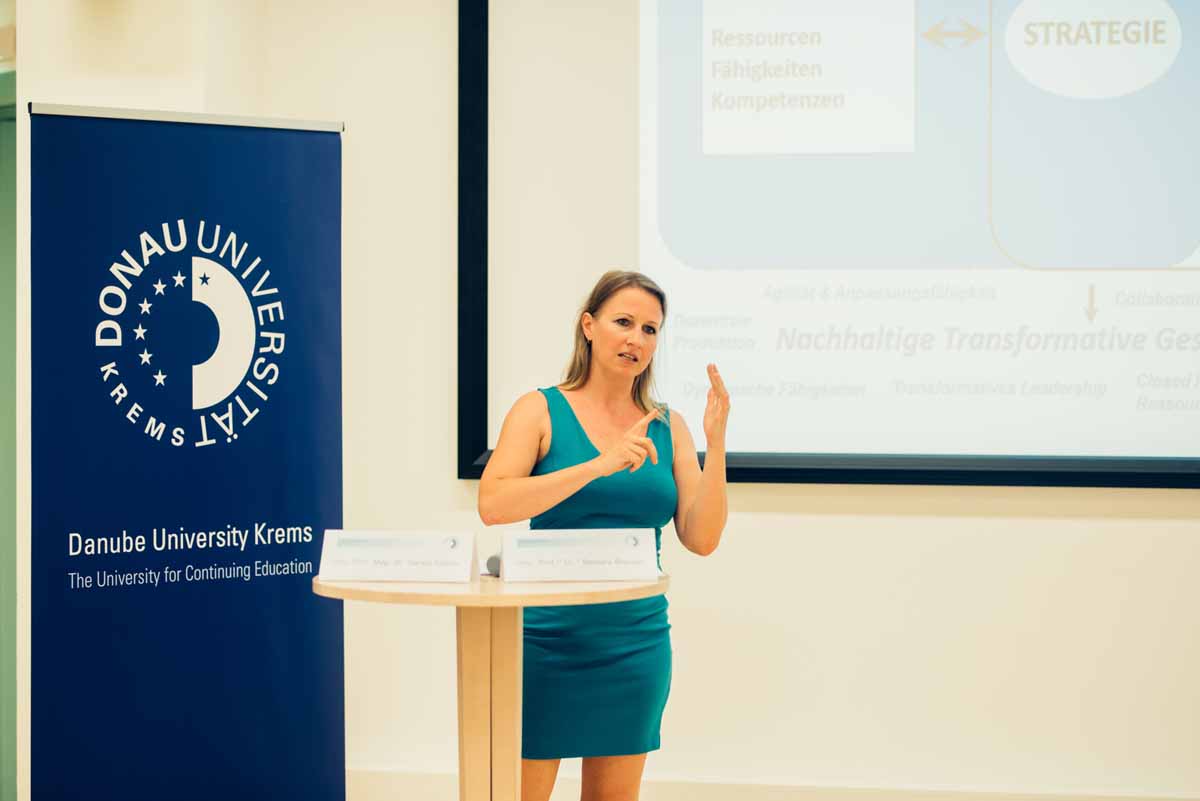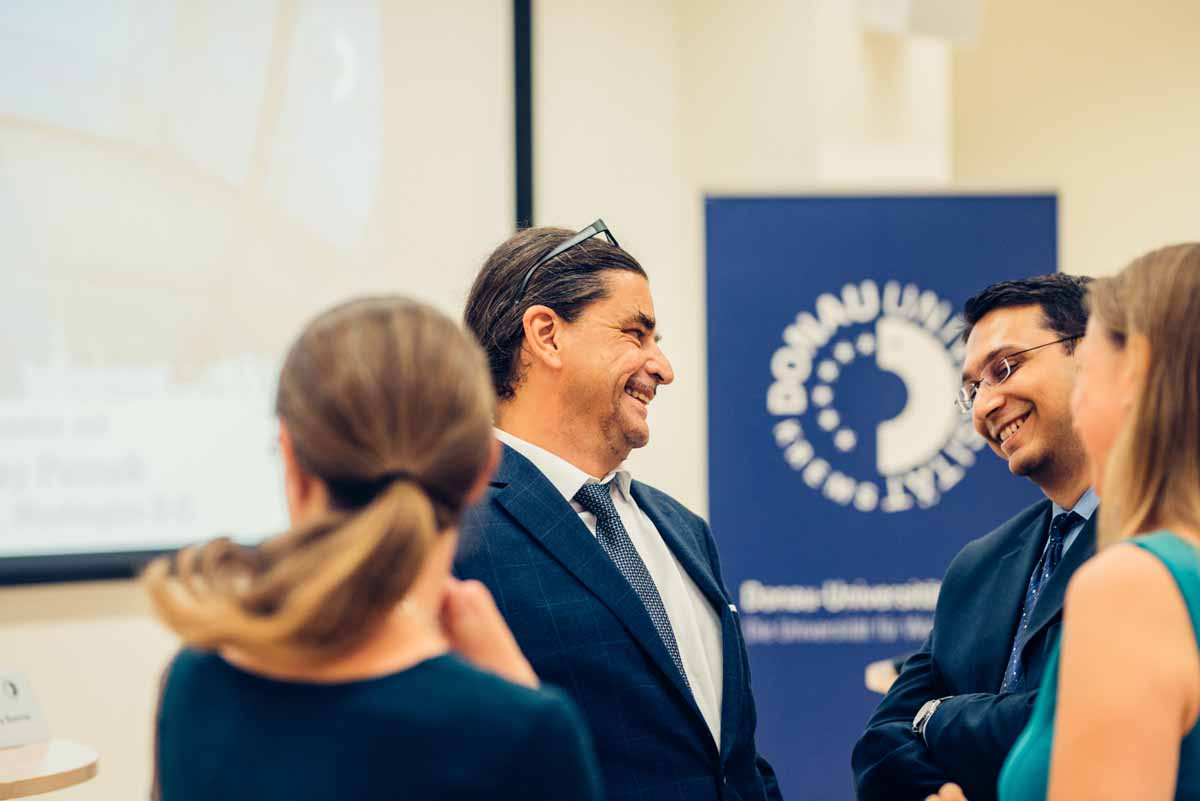The effects of climate change are currently drastically underestimated, warned Dr. Sanjay Patnaik (George Washington University) at the Faculty Talks held by the Faculty of Business and Globalization, Danube University Krems. Investors in particular are pushing for risk management in connection with climate change. The EU system of CO2 emission trading – following some “teething problems” – works well generally, but cannot be implemented everywhere in the same way.
CO2 concentrations in the atmosphere are rapidly rising. Land ice is receding much faster than scientists predicted. And rising sea levels will dramatically affect many regions. “Climate change will have a massive impact on all areas, and also strongly influence businesses,” Sanjay Patnaik said while summarizing climate change findings at the Faculty Talks hosted by the Faculty of Business and Globalization.
The political will is there
With the exception of the USA, where climate change continues to be denied by many, the will to do something about it exists. “This was again recently demonstrated at the Paris Climate Summit. The political will was there, across all borders,” says Patnaik, who himself attended the climate summit. However, fast countermeasures are essential, also in the interests of business and the economy, the professor of strategic management at George Washington University continued. “If we act now, it will be cheaper than in ten or fifteen years.“
As a consequence of the Paris treaty, more and more countries are implementing CO2 emission regulations. The regulation systems are based on the trade in CO2-emission certificates and a CO2 tax, or a mixture of both instruments.
EU as a pioneer
In this respect, the EU has an opportunity to take a pioneering role. “It’s remarkable that despite the resistance coming from large industrial companies and pressure groups, a price on CO2 was very quickly and very successfully introduced in Europe,” said the economist. In a relatively short time, a multinational system was established to include approx. 11,000 factories responsible for approx. 45 percent of CO2 emissions in the EU. True, compromises had to be made, such as countries being allowed to deal in certificates at the beginning. “Each country then used this for their own ends” said Patnaik. He went on to explain that some companies even took advantage of dealing with CO2-certificates to polish up their balances. “It was mainly the multinationals, energy firms and financial companies who understood the market better to maximize profit,” he said.
Teething problems are over
In this, the third phase of the EU program, the “teething problems” are over for the most part. But it may still take some time until the certificates recover from the price collapse in the aftermath of the financial crisis. A minimum price for CO2 certificates, as introduced in California, could counteract the uncertainty regarding future price developments, according to Patnaik. In general, the research projects showed that there is brisk trading in the CO2 markets: “So the markets seem to be working quite well.”
Certainly, a well-developed administration system is needed for emissions trading systems. Introducing a CO2tax may be therefore more expedient in developing countries. China is an interesting test case: “If introducing a CO2 regulation works there, it will mean a big step for the world.”
Climate change as a risk multiplier
Patnaik warned that, in the economy, the effects on the own company remain vastly underestimated. But investors are putting on the pressure, demanding for more climate change-related risk management.
And risks there are many – from hurricanes, drought, floods, destroyed production sites, disrupted transport routes, the costs of the CO2 regulation, the growing number of armed conflicts or wars, through to migration movements. Climate change, in effect, is a risk multiplier. “Companies must take risk management much more seriously than they are now.” The first step must be to actively pinpoint climate risks and integrate these into company strategy. “Thus companies can actively reduce risks on the one hand, and on the other hand, discover new opportunities for profit maximization,” explained the economist.
In addition to risk management, another key issue is companies’ agility in response to change, as Dr. Barbara Brenner, Head of the Department for Management and Economics also pointed out her introductory speech. With complexity increasing in all areas, being fit for the future, securing the ability to shape the changes, requires companies who can change and adapt.”
In the lively public discussion that followed, points included to what extent risk management is possible in the face of such unpredictable risks as climate change. One possibility, according to Patnaik, is scenario planning. “I may not know exactly how temperatures will develop, but I can develop plans for different scenarios.”
The climate goal of 1.5 degrees global warming is already unrealistic; more likely is a stabilization of between 2 and 3 degrees. “Knowing this, we also have to discuss geo-engineering – and conduct research,” the professor of strategic management from George Washington University urged.
From low interest rates to climate change
In the Faculty Talk series organized as fireside chats by the Faculty of Business and Globalization, current trends and the transformations in business, society and politics are discussed. Previous topics included the European Central Bank’s low interest rate policy, and “What decides elections? Real issues vs infotainment” with Dr. Peter Filzmaier and political journalist Martin Thür, MSc.
Contact
Sylvia Dienstl
